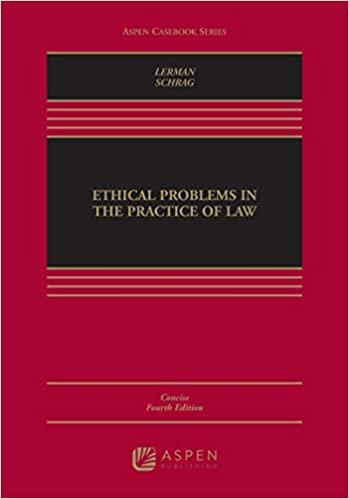Kindly provide answers to the following questions respectively
Consider the following two portfolios set up at time r : Portfolio A: Consists of the long forward contract with current value V. Simultaneously invest an amount of cash Koe -") in the risk-free investment. Portfolio B: Buy one unit of the asset, at the current price S, . Borrow ce of-7) at the risk-free rate of interest. At time / = r the value of Portfolio A is Koe -")+17. The value of portfolio B is S, -ce-off-r) At time 7 the payout from Portfolio A is income of Ko from the risk-free investment, which enables you to purchase the asset. This is worth $7. The payout from Portfolio B is one unit of asset, value Sy. Note that the income from the asset will have paid off the loan. The net cashflows of portfolio A at time 7 are identical to those of portfolio B. Using the no arbitrage assumption the prices must also be the same - that is: Vi+ Kne-"(-?) =5, -ce-"(->) = V=S, -Spear since Ko = Spe - ce(7-)Consider the following two portfolios set up at time r : Portfolio A: Consists of the long forward contract with current value V. Simultaneously invest an amount of cash Koe -") in the risk-free investment. Portfolio B: Buy one unit of the asset, at the current price S, . Borrow ce of-7) at the risk-free rate of interest. At time / = r the value of Portfolio A is Koe -")+17. The value of portfolio B is S, -ce-off-r) At time 7 the payout from Portfolio A is income of Ko from the risk-free investment, which enables you to purchase the asset. This is worth $7. The payout from Portfolio B is one unit of asset, value Sy. Note that the income from the asset will have paid off the loan. The net cashflows of portfolio A at time 7 are identical to those of portfolio B. Using the no arbitrage assumption the prices must also be the same - that is: Vi+ Kne-"(-?) =5, -ce-"(->) = V=S, -Spear since Ko = Spe - ce(7-)Avilas Led is about to make a 1 for 3 rights issue. Its existing equity and debt in its capital structure is as follows: Sh' 000' 6 million ordinary shares of sh 1 6,000 15% Debenture (redeemable at par in 10 years) 6,000 15% Bank loan (Repayable after 10 years) 6,000 The money raised from the rights issue would be used to do two things; 1. Buy back all the 15% debentures at their current market value. It is expected that their market value will be price to offer investors a yield of 9% on their investment since market interest rates have fallen substantially since the debenture were issued some years ago. (9% is the current market yield on debentures and bank loans with 10 years remaining to maturity). 2. Finance a new project costing Sh 1.6 million. The profitability index of this project is 1.8. The company's intention to undertake this project and its expected profitability have been made known to the investing public for some time. The total finance required for (a) and (b) should be rounded up to the nearest Sh 100,000 for the purpose of rights issue.Hamis is a manufacturing company that has recently developed a new product that is likely to be a major commercial success. Hamis must raise &m in order to put this product into production. The company's most recent statement of financial position is as follows: Harris Statement of Financial Position as at 31 March 2011 Em Assets Property, plant and equipment 22 Current assets 3 25 Equity Share capital Retained earnings 13 Liabilities Non-current liabilities 11 Current liabilities 25 Property, plant and equipment comprises E10m of land and buildings and $12m of manufacturing equipment. All of Harris' non-current assets are valued at cost less depreciation. Harris had its land and buildings revalued as at the year end. The valuer's report indicated that the buildings were of a specialised nature, but that the property could nevertheless be marketed for approximately $17m Non-current liabilities comprise a bank loan that has a covenant in place that forbids Harris from taking out further borrowings that would increase the company's gearing ratio (measured as debt over debt plus equity) to more than 50%. (i) Explain why a bank might be interested in a borrower's gearing ratio. [4] (ii) Calculate Harris' gearing ratio under each of the following conditions: . using the unadjusted figures according to the most recent statement of financial position assuming that Harris had borrowed the E8m required to fund the expansion assuming that Harris had borrowed the E&m required to fund the expansion and that the company had revalued its land and buildings in accordance with the valuer's report [6] (iii) Explain why the directors of limited companies are likely to take great care when deciding whether to revalue property. [5] (iv) Explain why the shareholders might prefer to have the property revalued rather than shown at cost less depreciation. [5] [Total 20]









